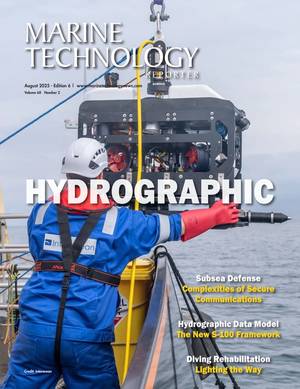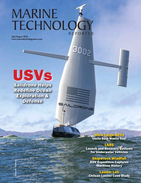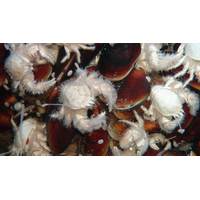
Novel Hydrothermal System Links Two Seabed Phenomena
An international research team led by the GEOMAR Helmholtz Centre for Ocean Research Kiel has discovered a globally unique system on the seabed off the coast of Papua New Guinea.During their expedition aboard the research vessel Sonne, they came across the “Karambusel” field, where two processes occur simultaneously: the release of hot hydrothermal fluids and unusually high amounts of methane and other hydrocarbons.This combination makes the system unique worldwide.It lies at a depth of around 1,300 meters on a flank of Conical Seamount in the western Pacific, off the island of Lihir in
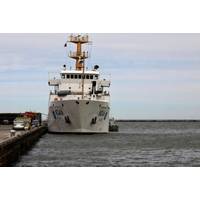
Europe Moves On as US Lets Science Slide
European governments are taking steps to break their dependence on critical scientific data the United States historically made freely available to the world, and are ramping up their own data collection systems to monitor climate change and weather extremes, according to Reuters interviews.The effort - which has not been previously reported - marks the most concrete response from the European Union and other European governments so far to the U.S. government's retreat from scientific research under President Donald Trump's administration.Since his return to the White House, Trump has initiated

An Oceanographic Music Mix
Music has an important role to play in climate crisis discourse, offering a sonic pathway to bridge the gap between data, understanding, reflection and action, say researchers from Australia’s Monash University.Their Dark Oceanography initiative integrates climate science with experimental music. Following the pathways of eddies from the Eastern Australian Current through the Southern Ocean and across the globe, they used Lagrangian tracking data at an eddy-resolving resolution (0.10ᵒ) and translated it into music.The music was collaboratively developed by a team from The Sound Collectors Lab
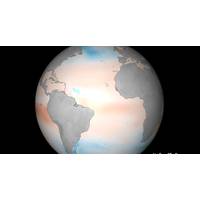
High-Resolution Mapping Reveals Carbon Sink Details
A new satellite-based product can now map the ocean carbon sink at unprecedented resolution.Although the oceanic sink for the human-induced carbon dioxide reduces global warming, there are significant biogeochemical consequences. This uptake leads to a reduction in seawater pH and alters the carbonate chemistry of the ocean. These changes in ocean chemistry, often collectively referred to as ocean acidification, impact marine organisms and alter marine ecosystems.Although scientists have made significant progress in understanding how the global ocean carbon sink changes over seasons and decades

Plutonium Levels in Sediments Remain Elevated 70 Years After Nuclear Tests
Researchers from Edith Cowan University (ECU) in Australia have confirmed plutonium levels in sediment up to 4,500 times greater than the Western Australian coastline.Three plutonium-based nuclear weapons tests were conducted at the Montebello Islands in the 1950's, which introduced radioactive contamination to the surrounding environment. The first nuclear test, coded Operation Hurricane, had a weapon's yield of some 25kT, and formed a crater in the seabed, while the second and third tests, dubbed Operation Mosaic G1 and G2, had weapons yields of around 15kT and 60kT, respectively.The three
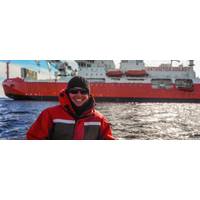
Australian Antarctic Program Appoints Chief Scientist
The Australian Antarctic Program has appointed Professor Nerilie Abram from the Australian National University as its new Chief Scientist.Abram is a professor of climate science and was elected as a Fellow of the Australian Academy of Science in 2024.“I’m incredibly excited and honoured to be taking up the role of Chief Scientist of the AAD,” Abram said. “Antarctica is such a special place, and the science that the Australian Antarctic Program does is critical for protecting Antarctica, and for preparing Australia and the world for how changes in Antarctica will affect us all.

Greater CO2 Uptake Could Cause Ocean Deoxygenation
Methods to enhance the ocean’s uptake of carbon dioxide (CO₂) are being explored to help tackle the climate crisis. However, some of these approaches could significantly exacerbate ocean deoxygenation.Their potential impact on marine oxygen must therefore be systematically considered when assessing their suitability, according to an international team of researchers led by Prof. Dr Andreas Oschlies from the GEOMAR Helmholtz Centre for Ocean Research Kiel.Global warming is the primary cause of the dramatic loss of oxygen in the ocean — approximately two percent of the ocean’s oxygen

An Unintentional Iron Fertilization Experiment
. Development of sensors to measure iron would represent a major leap forward.”In other phytoplankton and climate change news, a fleet of ocean robots has been deployed to explore the depths of the Labrador Sea as part of a year-long experiment led by scientists from the UK’s National Oceanography Centre. They are studying the ocean processes that help remove carbon dioxide from the atmosphere and store it in the deep sea
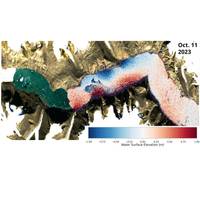
Trapped Wave Mystery Solved
Using a new type of satellite altimetry, a study led by Oxford University has finally confirmed the theory that the cause of extraordinary global tremors in September - October 2023 was indeed two mega tsunamis in Greenland that became trapped standing waves.In September 2023, a bizarre global seismic signal was observed which appeared every 90 seconds over nine days – and was then repeated a month afterwards. Almost a year later, two scientific studies proposed that the cause of these seismic anomalies were two mega tsunamis which were triggered in the remote Dickson fjord in East Greenland by

 August 2025
August 2025
